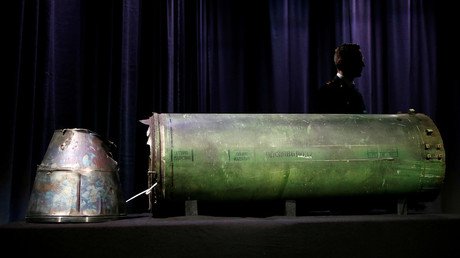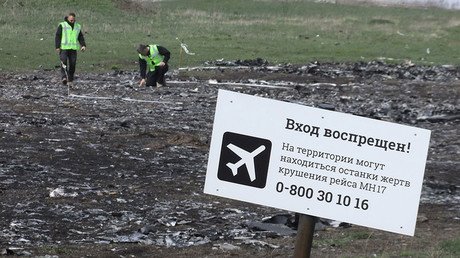The Russian Defense Ministry has rejected new claims that flight MH17 over Ukraine was downed by a missile from a Russian unit, urging the Dutch-led probe to focus on studying hard facts instead of social media images.
“Not a single anti-aircraft missile system of the Russian Armed Forces has ever crossed the Russian-Ukrainian border,” the defense ministry said in statement.
The Russian military raised eyebrows over “the determination of the Dutch-led investigation to justifying its conclusions by solely using images from social networks that have been expertly altered with computer graphic editing tools.”
The ministry pointed out that the images used in the Joint Investigation Team (JIT) press conference on Thursday were provided by the Ukrainian special services and had been previously displayed by the infamous British online investigative activist group, Bellingcat.
The Dutch-led probe announced that the missile that downed Malaysia Airlines flight MH17 in July 2014 came from a Russian military Buk system that crossed into Ukraine and then returned to its base in western Russia.
Investigators claim the missile system involved came from “the 53rd Anti-aircraft Missile Brigade based in Kursk in Russia”. The JIT essentially just repeated the conclusion made by Bellingcat a year ago.
The alarming part in the JIT probe is that “the Dutch investigators completely ignore and reject the testimony of eyewitnesses from the nearby Ukrainian communities”, according to the Defense Ministry. The testimonies, however, provided essential information “indicating the launch of a missile was carried out from a territory controlled by the Ukrainian Armed Forces.”
The Russian side said that it provided the international probe with “comprehensive” evidence, including field tests, which “clearly indicate the involvement of the Ukrainian Buk anti-aircraft system units” in the destruction of the plane with 283 passengers and 15 crew members onboard.
READ MORE: Accusations and threats, but where are the facts? – Russia challenges West on truth
The untampered radar data, which was also passed on by Russia to the Dutch-led investigation, “didn’t establish any aerial objects approaching the passenger Boeing from the western side,” it added.
If the international investigating team is really interested in establishing the true culprits of the MH17 crash "its representatives should rely in their statements primarily on facts and witness testimony instead of products by fakemakers from Bellingcat or the SBU (Security Service of Ukraine),” the Defense Ministry concluded.
With Russian military and authorities insisting they had nothing to do with the downing of MH17 on numerous occasions, Bellingcat’s reports have also been refuted by aviation experts, journalists and online activists.
Among other things, Bellingcat’s claims that Ukrainian forces had no Buk systems in the conflict area in the east of the country were also overturned by a plethora of Ukrainian media reports, with photos of Kiev’s Buk systems in the region, provided by the online activists.
The UK group’s assertion that the Buk missile was fired from an area controlled by the self-defense forces of the People’s Republic of Donetsk was also questioned as they were based on maps from the Ukrainian military and Ukrainian online map services, criticized for lacking accuracy.
Meanwhile, the Dutch journalists, who visited the MH17 crash site last year, have raised questions about the thoroughness of the JIT probe as they said a lot of debris from the aircraft, and what they identified as body parts, remained uncollected by investigators. Suspicions were further raised after they had everything collected in eastern Ukraine, along with their cellphones and laptops, confiscated by the Dutch police shortly after returning to the Netherlands.
Like this story? Share it with a friend!


